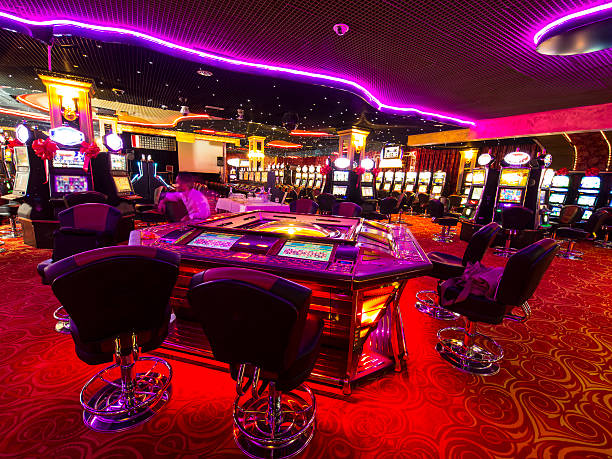Casino games have long captivated human interest, drawing gamblers into a realm filled with chance, strategy, and the allure of adventure. Each activity is meticulously crafted not just for entertainment, but also to elicit targeted emotional responses that keep gamblers engaged and invested. Nạp tiền 78WIN 78WIN Understanding the motivations behind these designs reveals much about how human psychology plays a vital role in the gaming experience.
From the bright lights and lively sounds to the complex layering of rules and incentives, casino games are designed to create an atmosphere of anticipation and anticipation. Game designers leverage behavioral strategies to influence gambler behavior, whether through the use of winning opportunities, near-miss scenarios, or community engagement. By examining these elements, we can better appreciate how casino games fulfill not just a desire for entertainment, but deeper psychological needs for adventure and risk.
Comprehending Gamer Behavior
Casino games are engineered with a profound comprehension of gamer psychology, which is essential for attracting and keeping players. The thrill of the game, alongside the expectation of winning, produces a powerful draw. Game designers utilize elements like sonic elements, dynamic graphics, and engaging gameplay to capture attention and generate emotional responses. These sensory experiences enhance the total environment, making players feel more attached in the game.
Another important aspect of player behavior is the notion of risk/reward dynamics. Casino games often balance high-stakes situations with the potential for substantial rewards, which can lead to the occurrence known as near-miss effect. When players come within reach to winning, the brain releases dopamine, reinforcing their behavior and motivating them to persist playing in pursuit of that elusive win. This cycle of hope and frustration plays a key role in how games are structured and advertised.
Lastly, community aspects also play a pivotal role in player behavior at casinos. Many games are made to be played in groups or with other players, nurturing a sense of togetherness and communal experience. The community engagement inherent in games like poker enhances enjoyment and can culminate in extended gameplay. Designers leverage on this by crafting environments that invite players to stay, interact, and return, making the overall casino experience more appealing.

The Role of Imagery and Audio
Visuals and audio play a vital role in improving the player’s experience within casino games. Designers utilize vibrant colors, eye-catching graphics, and captivating animations to attract players’ attention and hold their focus. The use of motifs, such as adventure or opulence, helps create an engaging atmosphere that transports players into a different world. By connecting to the senses, these elements contribute to a heightened emotional response, encouraging players to interact more deeply with the games.
Sound design is just as important in enhancing the experience of casino games. The combination of ambient music, sound effects for winning combinations, and ambient noises creates an auditory landscape that holds players enthralled. Audio cues associated with wins, such as chiming bells or festive music, evoke feelings of thrill and satisfaction, prompting players to continue playing. These sound cues are strategically placed to enhance the thrill of the game and create a more immersive experience.
Additionally, the synchronization of imagery and sound is important for reinforcing the game’s overall theme and atmosphere. Each element should align seamlessly to create a cohesive experience that draws players in. The effective use of this integration not only enhances user satisfaction but also boosts the likelihood of return play, as players become more invested in the immersive world that the casino games offer. This thoughtful integration of visuals and sound ultimately enhances player involvement and loyalty.
Reward Structures and Engagement
The design of casino games greatly depends on reward structures to ensure participants involved and returning for more. These systems are based in behavioral principles that exploit human nature and motivation. Players are often motivated by the excitement of success, which is supported by instant feedback through the game’s mechanics. This instant gratification not just enhances the overall experience but also fosters a feeling of success, encouraging participants to keep participating in hopes of greater rewards.
Gaming establishments implement various reward structures, such as jackpots, bonuses, and multipliers, to captivate players. These elements create a layer of thrill that maintains interest. Additionally, the randomness of results plays a significant role in sustaining interest. The intermittent reinforcement schedule, where wins are unpredictable but happen often enough, keeps participants on edge and driven to keep playing. This loop of hope and expectation is foundational to the effectiveness of gambling experiences.
Moreover, community aspects, such as competitive events and multiplayer features, enhance the engagement factor by tapping into the competitive nature of participants. The shared experience of gaming with others can amplify the excitement of success and create a community atmosphere within the casino. By integrating these social dynamics with efficient incentive structures, casino games not only provide entertainment but also nurture a deeper bond among participants, reinforcing their commitment to the overall experience.